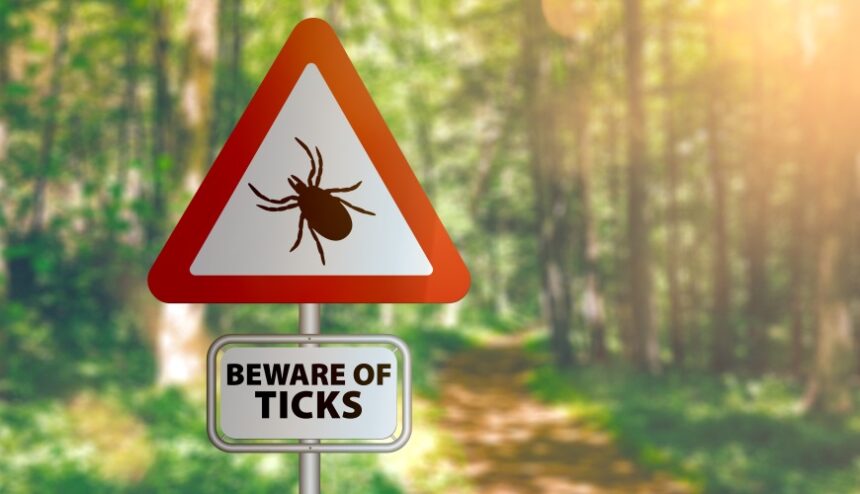By Erin Dahlke, MD, Family Medicine

Our mild winter and wet spring conditions have made ticks more widespread than usual. They are abundant. When more ticks feed, more ticks produce offspring – in clusters. So from early spring throughout summer, they are lurking on pets and tall blades of grass, just waiting for their next ‘host’ to walk by.
We all dread finding these tiny creatures on our skin or pets. Rest assured, most ticks do not carry diseases, and most tick bites do not cause serious health problems. However, promptly removing the tick will help you avoid diseases the tick may pass on during feeding. The most common ticks we find in Minnesota include the wood tick (American dog tick) and the deer tick (black-legged tick).
Tick Removal and First Aid
If you find a tick on your skin or scalp, remove it as soon as possible. Use a fine-tip tweezer or tissue instead of your bare fingers. Grasp the tick as close as possible to the head. Gently but firmly apply pressure on the tick until you pull it out. Don’t jerk or twist the tick and risk breaking it, leaving its mouthparts in your skin. Don’t try to smother the tick using tape, Vaseline, nail polish, or rubbing alcohol, as this may increase your risk of infection, and these methods are ineffective. Also, do not try to burn the tick while it’s attached to your skin.
Wash the site of the tick bite with mild soap and water, and watch the area for any signs of infection. If you don’t know the species of the tick, save it in a container to be identified later. Ticks may carry diseases that cause flu-like symptoms and sometimes a rash or sore, which may begin from 1 day to 3 weeks after the tick bite. It’s also a good idea to make sure your tetanus shot is up-to-date.
To help relieve pain and itching at home, apply an ice pack to your bite for 15-20 minutes once an hour for the first 6 hours. Keep a cool, wet cloth on the bite for up to 6 hours when you’re not using ice. You can also try a non-prescription antihistamine medicine, such as Benadryl, to help relieve itching, redness, and swelling. Do not give antihistamines to your child unless you’ve checked with the doctor first. Spraying a local anesthetic containing benzocaine may help relieve pain. Calamine lotion may help relieve itching.
Lyme Disease Symptoms and Treatment
Deer ticks are easier to spot because of their reddish-brown body. Lyme disease is one of the common deer tick-borne illnesses, and the risk of getting it increases with how long the tick is attached to you. Symptoms include fatigue, headache, stiff neck, fever, muscle or joint pain, and sometimes a red rash that looks like a target. When treated promptly, Lyme disease can be effectively treated with antibiotics. However, complications may result if treatment is delayed.
Prevention
As you may have guessed, it’s best to completely avoid tick-bites altogether, but don’t let them keep you indoors all summer. You can apply an insect repellant, according to package directions. Cover as much of your skin as possible when working in grassy or wooded areas. Wear a hat, gloves, light-colored long-sleeve shirts, and long pants with the legs tucked into your socks. Reduce the tick population near your house and yard by clearing leaves, brush, and tall grasses. Treating your lawn with chemicals may be effective, but they aren’t always safe for you or your pets. A local nursery or county extension office may have nonchemical or environmentally safe methods you can try. Your local veterinary clinic will have suggestions for preventing and treating tick bites on your pets.


